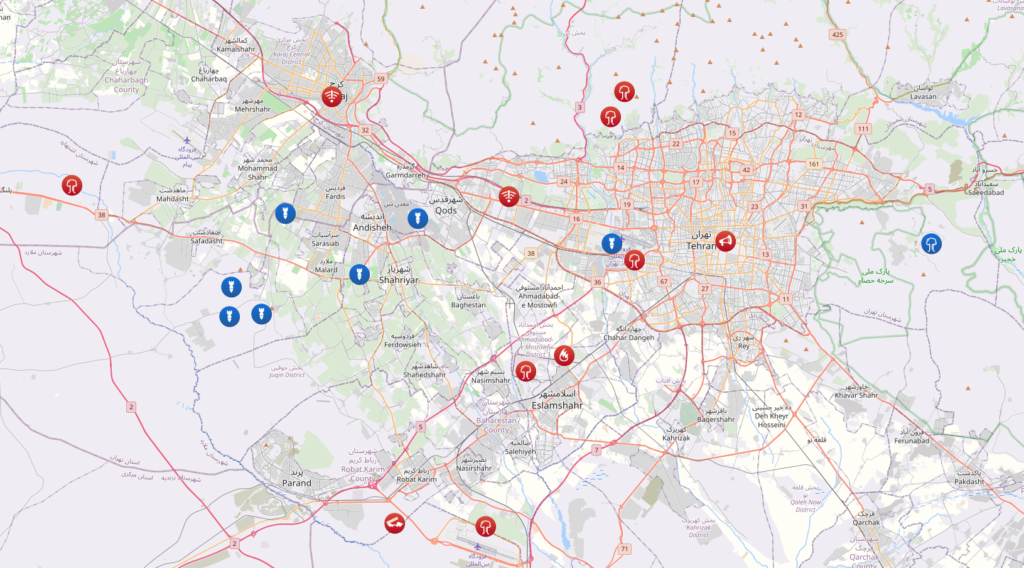If you want to make a social justice warrior mad, one of the many, many ways is to point out how the flood of illegal aliens the Biden-Harris administration imported spurred an equally large crime wave. Expect to be called a racist. But rest assured, the illegal alien crime spree is real.
The arrest of an illegal immigrant for the murder of Georgia nursing student Laken Riley a few weeks before President Joe Biden’s 2024 State of the Union address ignited a political firestorm. “Laken’s death is the direct result of policies on the federal level and an unwillingness by this White House to secure the southern border,” Georgia’s Republican governor Brian Kemp charged, after reports emerged that the border patrol had grabbed Venezuelan Jose Ibarra back in 2022, but that he was quickly paroled and released into the United States. Republican presidential nominee Donald Trump, reacting to the controversy, warned of an illegal-alien crime wave; at the State of the Union itself, Republican congresswoman Marjorie Taylor Greene interrupted Biden, calling out for the president to “say her name”—a reference to Riley. When Biden did mention her name, he acknowledged that she died at the hands of an illegal migrant; further controversy ensued when he later apologized for using the term “illegal,” and not the politically correct “undocumented.”
The elite press rode to Biden’s defense. The idea of a migrant crime wave was a myth, media outlets proclaimed, noting studies of Texas incarceration data from years ago, which seemed to suggest that illegals commit crimes at low rates. This ignored other surveys, based on federal multistate data, which show a far more troubling reality. And after years of a migrant border “surge”—with countless asylum-seekers inadequately vetted and then allowed to enter the U.S.—state law-enforcement agencies now warn that immigrant gangs have seized control of many drug- and human-trafficking networks and have unleashed robbery sprees across the nation. With polls showing Americans alarmed about illegal immigration—a majority even backing mass deportations—Virginia governor Glenn Youngkin reflected public anger when he charged that “every state” is now “a border state.”
Underlying the escalating controversy is the sheer number of migrants entering America during the Biden administration. In a 2020 debate with Trump, Biden seemed to encourage an immigration surge, and it followed soon after his election, with about 8 million people, on some estimates, flocking to the U.S. border without applying first for legal entry. The administration has released up to 3.3 million of them into the U.S. to await immigration hearings, many of which won’t occur for years. At the same time, the number of immigrants who enter by avoiding border security and remain fraudulently in America has also skyrocketed, to an estimated 1.6 million to 1.7 million since Biden’s election, compared with about 1.4 million over the entire previous decade.
Yet, even as more illegals arrived, removals of those convicted or accused of a crime have dropped. In 2021, illegal immigrants deported because of accusations or convictions of lawbreaking fell to 45,432, from a high of 123,128 in 2019, according to Immigration and Custom Enforcement’s annual report on enforcement-removal operations; in 2022, ICE removed just 46,400 aliens. Similarly, ICE prosecutions of illegals for criminal actions have plunged by two-thirds, from 6,739 in 2019 to just 2,208 in 2022.
We have no reason to think that this reflects reduced levels of criminality. Shortly after taking office, in fact, the Biden administration narrowed the criteria for expelling criminal aliens, requiring immigration officials to remove only those deemed an immediate risk to public safety; others, even felony offenders, were permitted to stay. The order also mandated newly extensive investigation of individual cases, which, combined with the border influx, overwhelmed immigration services. The crisis is captured in the numbers: the caseload of immigration-removal operations has soared from about 3 million in 2019 to 6 million under Biden in 2023, while staffing has stayed flat.
Against this backdrop, numerous high-profile crimes—including the murder of Riley, an assault by several immigrants in Times Square on NYPD officers, and police cautions about foreign home-invasion gangs hitting wealthy neighborhoods—have intensified the debate over just how much crime the Biden immigrant surges have unleashed. Much of the mainstream media and immigration advocates, for their part, accuse conservatives of making it all up. Headlines like “The Myth of the Migrant Crime Wave,” “Migrant Crime Wave Not Supported by Data,” and “Immigrants Are Less Likely to Commit Crimes” have been common, especially after Trump made immigrant crime a 2024 campaign issue.
Most of these stories rely on studies like one from the Proceedings of the National Academy of Sciences in 2020, which used data from 2012 through 2018 collected by Texas’s Department of Public Safety. That study estimated that illegals commit crimes only two-thirds as often as legal state residents. Critics note that the report is limited, focusing on only one state—by necessity, since few local jurisdictions have released data on immigrant prisoners (in so-called sanctuary states and cities, intentionally so). Officials at the Center for Immigration Studies, which advocates for immigration restrictions, say that the PNAS study also undercounted the number of incarcerated illegals because of limitations on how Texas collected the data.
To overcome the data deficit, the Federation for American Immigration Reform considered statistics from the federal State Criminal Alien Assistance Program, which enables states to get reimbursed by Washington for the cost of incarcerating illegals. To be paid, states must verify that prisoners are illegal immigrants and file detailed reports to the feds. Examining the SCAAP data for ten states with the highest illegal-alien populations, the FAIR study found that, on average, illegals were more than twice as likely to be in prison in California, compared with other state residents; they were twice as likely to be in prison in New York, too; in New Jersey, they were nearly four times as likely, and in Arizona, nearly five times. Among the states studied, Texas showed the smallest difference between legal residents and illegal immigrants in rates—probably, the FAIR authors theorized, thanks to tougher border enforcement, which deters immigrant criminals from remaining in the state.
Snip.
That the migrant surge began just months after a defund-the-police movement swept America has doubtless fueled the immigrant crime problem. The anti-law-enforcement push, intensifying after George Floyd’s 2020 death in Minneapolis, has decimated forces in many places, as demoralized cops quit, and has led to a rollback of proactive enforcement methods, including in immigrant-heavy cities like New York and Los Angeles. The rise of soft-on-crime progressive prosecutors, who back bail reforms that put wrongdoers quickly back on the street or seek light sentences for those convicted, has further weakened crime deterrents. Manhattan District Attorney Alvin Bragg is a prime example. He sparked outrage in early 2024 when he released, without bail, several immigrants after they had attacked NYPD officers—this despite clear video evidence of the violence. A grand jury subsequently indicted the migrants, leading to a nationwide hunt to recapture them.
The Bragg-style soft-on-crime approach—especially combined with sanctuary policies that keep cops from cooperating with immigration authorities—has resulted in countless examples of repeat-offender aliens getting off scot-free. NYPD officials slammed New York’s sanctuary policies, which forbid the police from cooperating with federal immigration officials, after an illegal alien with previous convictions and a deportation order against him brutally raped a New York woman in August. “When will our sanctuary city laws be amended to allow us to notify federal authorities regarding the deportation of non-citizens convicted of violent crimes?” the NYPD’s chief of patrol asked the press. Sometimes, deadly consequences have ensued, like the horrifying case of 12-year-old Jocelyn Nungaray of Houston, whom two illegals allegedly dragged under a bridge, raped, and killed. Border officials had earlier stopped and released the two men. Testifying before Congress last year, the president of Victims of Illegal Alien Crime, Donald Rosenberg, said that almost all illegal-alien-caused deaths in the U.S. are preventable. “In the past 12 years, I have reviewed hundreds, maybe over a thousand, cases that resulted in a fatality. I can’t remember one where the killer didn’t have prior convictions or, at the very least, contact with law enforcement. Why were these people still here?”
Recently, several whistleblowers from U.S. Customs and Border Protection said that immigration officials have been failing to enforce a federal law that mandates collection of DNA samples from illegals. The result: a failure to identify criminals who are then released back into society instead of being detained. “The continued, prolonged, willful failure to comply with the DNA Fingerprint Act has resulted in the harm that Americans are dead, and these deaths were preventable,” border agent Fred Wynn recently said.
Riley’s alleged killer had been arrested several times and let go, despite his illegal status. At the time of the murder, Georgia authorities wanted Ibarra for failing to appear in court after a shoplifting arrest and release. A 2018 Government Accountability Office study found the problem particularly acute in sanctuary states. The average criminal illegal alien in California has six convictions, yet remains in the United States. According to a recent letter from ICE officials to Congress, there are 662,566 immigrants on an ICE non-detain docket—that is, they have been accused or convicted of a crime but aren’t being deported, including 435,719 convicted criminals and 226,847 with charges pending. This includes 62,231 convicted of assault (15,811 of sexual assault) and 14,301 convicted of burglary.
Immigration advocates counter that significant immigrant wrongdoing can’t be going on, as crime rates are now falling. That’s disingenuous. As former director of the Bureau of Justice Statistics Jeffrey Anderson explained in City Journal, though the sharp rise in crime that began in late 2020 appears to have peaked, violent crime levels remain well above 2019 levels, after increases of as much as 73 percent in urban areas, according to victimization reports. Elevated crime “is not a figment of Americans’ imaginations,” Anderson observes.
Meantime, despite the media’s minimizing the issue, governors and public-safety officials in many states have talked openly about how they’ve had to redirect money and law-enforcement personnel to fight illegal-immigrant crime. The cost of this effort figures prominently in a lawsuit against the Biden administration, filed by 18 largely Republican-led states, stretching from Virginia and Tennessee in the east to Utah in the west to Iowa and Wyoming, over 1,000 miles north of the southern border. Iowa officials, for instance, say that they’ve had to boost spending by “tens of millions of dollars each year for increased law enforcement related to immigrant criminals.” The state’s residents, the officials complain, “suffer increased crime, unemployment, environmental harm, and social disorder, due to illegal immigration.” Despite its distance from the southern border, the state has become “a hot spot for trafficking activity.”
Mexican migrant gangs have invaded Montana, a northern border state, seizing control of the illegal opioid market and driving an epidemic of overdose deaths on Indian reservations. “People are surprised,” the U.S. attorney for Montana, Jesse Laslovich, notes. “You’re as far north as you can get in the United States, and yet we have the cartel here.” After visiting the southern border in early 2023, Montana’s governor, Greg Gianforte, added, “The situation has never been more dire for our country. Human traffickers and drug cartels are profiting on catastrophe the Biden administration has made worse, with thousands of illegal crossings each day.”
Democrat-led California wasn’t part of the lawsuit, but it, too, has struggled with climbing criminality by illegal aliens. In 2023, for example, the state spent roughly $30 million to expand the California National Guard’s border drug-interdiction work, assigning some 370 soldiers to a task force that seized over 60,000 pounds of fentanyl that year alone—a tenfold increase in just two years. In early summer 2024, federal and state authorities busted a drug-smuggling and money-laundering operation in Los Angeles run jointly by Mexico’s Sinaloa cartel and Chinese gangs.
Entering America illegally, Chinese gangs have cornered the black market for pot in Oklahoma. Though pot legalization was supposed to ease drug-related crime, the spread of legal recreational cannabis and so-called medicinal marijuana has produced a new kind of black market, in which criminal gangs cultivate the drug and then sell it more cheaply than government-approved retailers. In the Sooner State, the gangs have imported an army of migrant workers to work the fields and distribute the illicit product. State leaders estimate that roughly 3,000 illegal-immigrant growers are operating in Oklahoma, with about 80 percent of them under Chinese mafia control; they’re selling $18 billion to $40 billion yearly in pot, a ProPublica investigation estimated. Chinese women get trafficked across the border to serve as prostitutes for the men working the farms. And the criminal activity doesn’t stop there. As one former Drug Enforcement Administration official recently noted, “Marijuana causes so much crime at the local level—gun violence in particular. The same groups selling thousands of pounds of marijuana are also laundering millions of dollars of fentanyl money. It’s not just one-dimensional.” ProPublica listed some of the crimes associated with illegals in Oklahoma: “violence, drug trafficking, money laundering, gambling, bribery, document fraud, bank fraud, environmental damage and theft of water and electricity.”
Lax border security has also enabled foreign criminals to exploit the larceny du jour in America: retail theft. Organized shoplifting has exploded in recent years, as states softened penalties against theft and passed bail reforms that let nonviolent criminals remain on the streets. Illegal-immigrant gangs noticed. In congressional testimony, National Retail Federation officials detailed how crews of Eastern European illegals have launched roughly 170 shoplifting rackets nationwide. Members wear specially designed clothing with extra-large pouches, so that they can cart lots of merchandise away. Similarly, Latin American gangs have come to the U.S. and stolen “high-value electronic devices,” which they then move to central locations to get shipped overseas for sale. Disrupting these multistate networks, the retail executives told Congress, has been tough, partly because “it has been challenging to get state or federal prosecution or collaboration” against the gangs.
This “burglary tourism” has lately extended to breaking and entering in residential neighborhoods. South American gangs, especially from Chile, have obtained visas to get into the U.S. without criminal background checks, through a Homeland Security program called the Electronic System for Travel Authorization–Visa Waiver Program, and have gone on a burglary spree. (The program was paused this summer after an internal report found massive fraud, a Fox News investigation uncovered.) These sophisticated crews use Wi-Fi suppression equipment to disarm home alarms, cell-phone trackers to determine the location of homeowners, and fake IDs, and have committed break-ins in Orange County in California, Oakland County in Michigan (where one foray yielded an $800,000 haul), and Raleigh, North Carolina, among other locations. The gangs face minimal risks. Even when cops bust them, the perpetrators, typically with no criminal history in the U.S., are often speedily let go. Then they vanish, skipping their court dates. The leaky immigration system has made some criminals so bold that they deliberately get themselves arrested at the California border, knowing that they will be immediately released into America. They then proceed to commit residential burglaries and other thefts, according to Orange County Senior Deputy District Attorney Bradley Schoenleben’s testimony before Congress. Schoenleben blamed “soft-on-crime policies and federal failures to verify criminal histories for Chilean Visa Waiver applicants” for unleashing this crime wave.
Plus a rise in violent Latin American gang activity, including the now infamous Tren de Aragua.
Read the whole thing.




